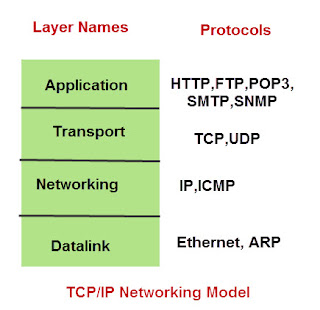The name TCP/IP refers to a suite of data communication protocols. The name comes from two of the more important protocols in the suite. The Transmission Control Protocol(TCP) and the Internet Protocol(IP). It consists of five layers: Physical, Data Link, Internet, Transport, and Application. The internet layer is equivalent to the Network layer and the Application layer is roughly doing the job of the Session, Presentation, and Application layer.
TCP/IP is a hierarchical protocol made up of interactive modules, each of which provides a specific functionality.
TCP/IP is a hierarchical protocol made up of interactive modules, each of which provides a specific functionality.
The layers of the TCP/IP suite contain relatively independent protocols that can be mixed and matched depending on the needs of the system.

Comments
Post a Comment